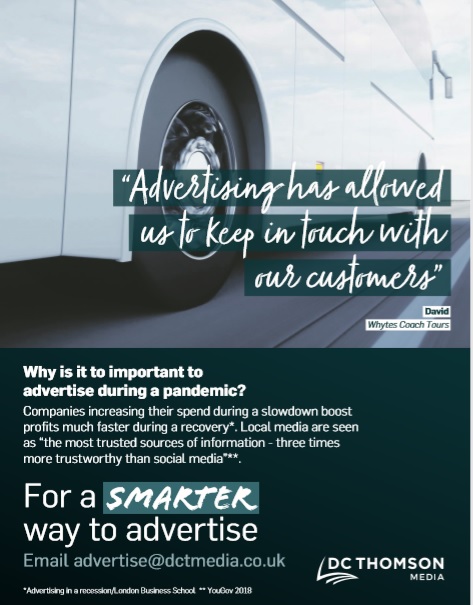There is no escaping the fact that the Covid-19 pandemic has had a massive effect on the local and national economy, as we were told to ‘stay home’ and ‘save lives’.
UK spending is down and last year the GDP plunged by 19% in the second quarter of 2020 during the first lockdown, in what was “the biggest decline in history”.
However, many small to medium businesses have, in fact, thrived during this challenging period and emerged stronger by advertising in their local newspapers, on their websites and on local radio stations.
That’s because companies increasing their spend during a slowdown boost profits much faster during a recovery* and local media are seen as “the most trusted sources of information and are three times more trustworthy than social media”**.
In print
- Local press is “reliable” with 74% of people saying they trust local newspapers for local news and information
- The magazine industry saw phenomenal growth: subscribers of DC Thomson Media magazines rose by 39% up to more than 77,200 in January 2021 as readers sought escapism in 2020.
On the radio
- Radio also experienced growth as 38% of people working from home in the UK now listen to the radio more, while nearly half (44%) of home-workers says that they “often search for more info on products after hearing them advertise on radio”.
Online
- Online there was a boom in the number of people visiting local newspaper websites – DC Thomson Media’s new sites saw a 34% increase in online traffic during first lockdown in 2020.
Of course, there is more to advertising than placing an advertisement in the local paper, as Craig French, Head of Advertising at DC Thomson Media, points out: “Our sales teams put in great effort to maximise marketing campaigns for our clients.
“The aim for us is to drive response and build brand awareness for all of our advertisers. We have experienced account managers, who will be able to offer any business a consultative approach to their advertising plans during this extremely challenging time.
“DC Thomson Media has a wealth of media brands spanning across print, digital, radio and events which can make up a perfectly-tailored advertising opportunity for any business whatever its size – so please feel free to contact us.”
What you need to know for advertising during a pandemic:
- Know what people need right now: accurate and reliable information; customer service and support; community and positivity
- Know your brand: its unique role it plays in people’s lives; and how it can help people
- Know your message: consider the context; is it relevant and topical
- Know your voice: be thoughtful about your brand’s tone of voice, consider empathy and delicate humour
To boost your business and get your story heard, send an email now to: advertise@dctmedia.co.uk
*Advertising in a recession, London Business School
** YouGov 2018



